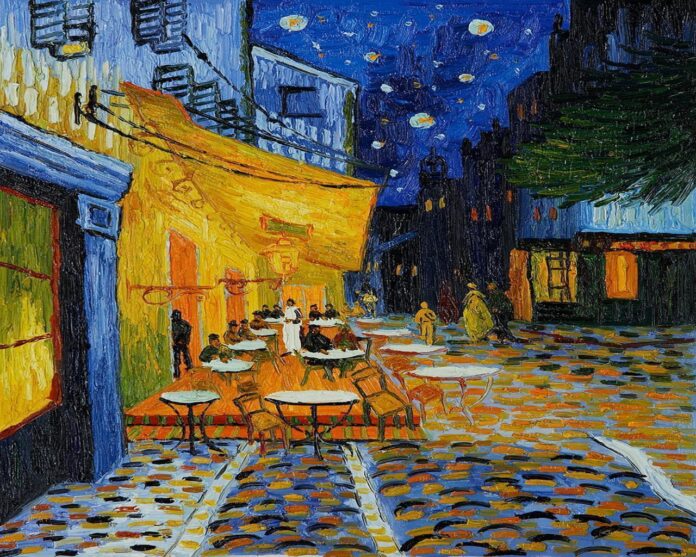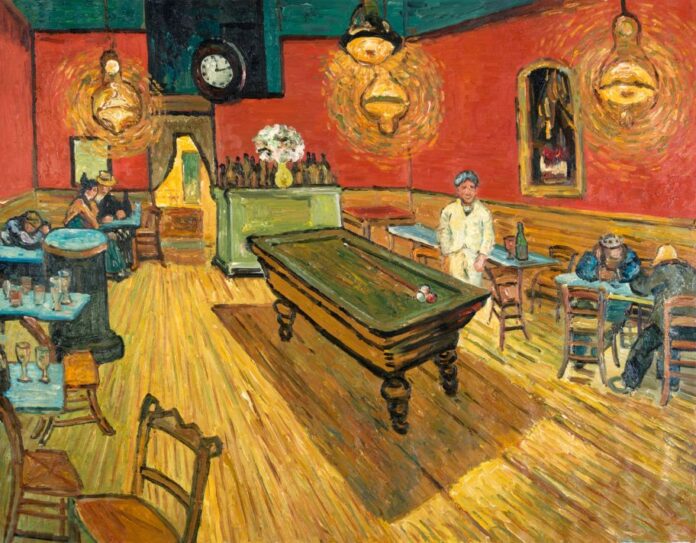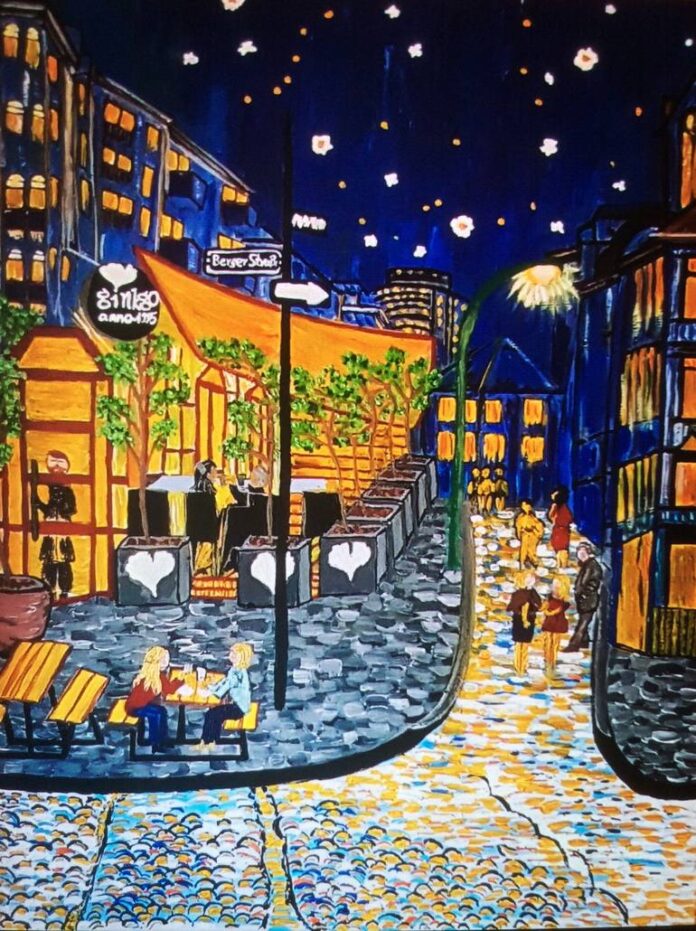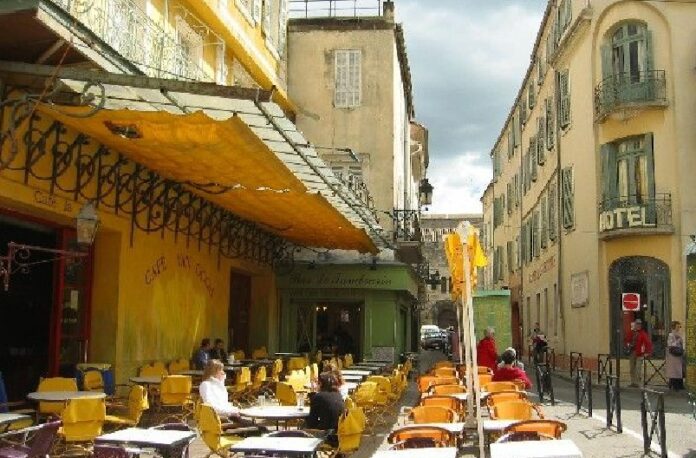“I love cafes, because of the people and because it’s a place to rest…It’s good for anyone who’s a little overworked or tired from traveling.” -Vincent van Gogh.
Vincent van Gogh was, hands down, one of the greatest artists of all time and has created some of the most renowned masterpieces. People all across the world know him for his artistic talent and his passion for art. But not many are aware that the artist was a big fan of coffeehouses and cafes. And this is evident in many of his famous artworks like Cafe Terrace at Night.

The artist found these spots an integral source of inspiration for his artwork and for creating masterpieces people admire to date. He perfectly painted the welcoming, vibrant ambiance of these places. One more reason why he frequented these places is to engage in conversations with other creatives and to enjoy the warm sense of community and connection. Let’s unravel van Gogh’s love for cafes and coffeehouses.
The Inception of the Great Love Story
“I am very fond of cafe life…you can sit there and think and write and draw for hours.”
Vincent van Gogh’s love for cafes and coffeehouses started during his stay in Paris. It was at the same when Paris had become a hotspot for artists and writers to discuss their ideas and works. And van Gogh loved this setup– vibrant spaces, intellectual conversation, and a new perspective on his work.
The interesting thing is van Gogh found these places to be an incredible way to observe people and their behavior. At times, he’d also sketch people’s portraits. In fact, he had mentioned to Theo, his brother, how much he enjoyed observing individuals from all walks of life come together and interact in social places. He would note their expressions, body language, and gestures, and use his observations in his artworks.
“Last night I was in a café until one in the morning, and I’m back again this morning. It’s a café that you’d like, I think, with mirrors in which you can see yourself at full length, and you can walk around the whole place in a circle. It’s called the Tambourin.”
Vincent van Gogh’s favorite cafe was Cafe du Tambourin which he mentioned to Theo in several of his letters. Other cafes he frequented include Cafe de la Nouvelle-Athenes and Cafe de la Rotonde.
Paintings Showing Cafes and Coffeehouses
Let’s look at van Gogh’s painting list that showcases the cafes and coffeehouses that the artist often visited.
Café Terrace at Night
Cafe Terrace at Night shows a cozy, dimly lit cafe in Arles, France. The oil painting is widely reknowned for its vibrant hues of blue and yellow, creating an inviting contrast. Additionally, the thick, impasto brushstrokes enhance the view the artist has so artistically captured. Housed in the Kroller-Muller Museum in Netherlands, this famous painting was completed by the artist in one just one night.
The Night Cafe

The Night Cafe portrays the inside of a local cafe where the harsh electric light is casting dim glow over everyone and everything. The deep red walls contrast the pale yellow-greening hue of the floor. This color theory technique has been used by Van Gogh in this painting to create a sense of energy and movement.
Van Gogh’s Legacy in the Cafes and Coffeehouses
Van Gogh’s love for cafes and coffeehouses has transcended time and has become an inspiration for many establishments today. It is amazing how his legacy still lives on, not only through his paintings but also through the cafes and coffeehouses that have embraced his artistic style and vision.
These establishments have created a unique atmosphere that transports visitors to a time when van Gogh walked the earth. They have infused his aesthetic into their branding, and some have even named themselves after the artist. This is a testament to the impact that van Gogh has had on the world of art and how his love for cafes and coffeehouses has become an integral part of his legacy.
By displaying art replicas of his paintings, these cafes and coffeehouses have not only paid tribute to the artist but have also enhanced the ambiance of their establishments. The bold colors and expressive brushstrokes that are characteristic of van Gogh’s paintings have added life to these places and created a unique experience for visitors.
In conclusion, Vincent van Gogh’s love for cafes and coffeehouses has left a lasting impression on the world of art and on the establishments that have embraced his vision. His paintings have become an integral part of the ambiance of these places, and his legacy continues to inspire many to this day. It is a testament to the power of art and how it can transcend time and space, creating a connection between the past and present.
Conclusion

In conclusion, Vincent van Gogh’s love for cafes and coffeehouses was not just a mere fondness but a passion that inspired some of his most famous artworks. These places were a haven for him where he found solace and inspiration, and a chance to engage in conversations with other creatives. He also used these social spots to observe people and their behavior, which he incorporated into his paintings.
Van Gogh’s legacy in the cafes and coffeehouses is evident today, with many establishments paying homage to the artist by displaying replicas of his paintings and even renaming themselves after him. The vibrant colors and expressive brushstrokes in his paintings add life to these places and make them even more special for art enthusiasts.
Moreover, van Gogh’s love for cafes and coffeehouses serves as a reminder of the importance of finding inspiration and connection in the little things around us. In our fast-paced lives, it’s easy to forget the significance of taking a break and enjoying the warmth of community, especially in these social spaces.
Finally, Vincent van Gogh’s love for cafes and coffeehouses reminds us that great art can be created in any setting and that inspiration can come from unexpected places. His legacy continues to inspire generations of artists, and his passion for life and creativity is something that will always be remembered.









